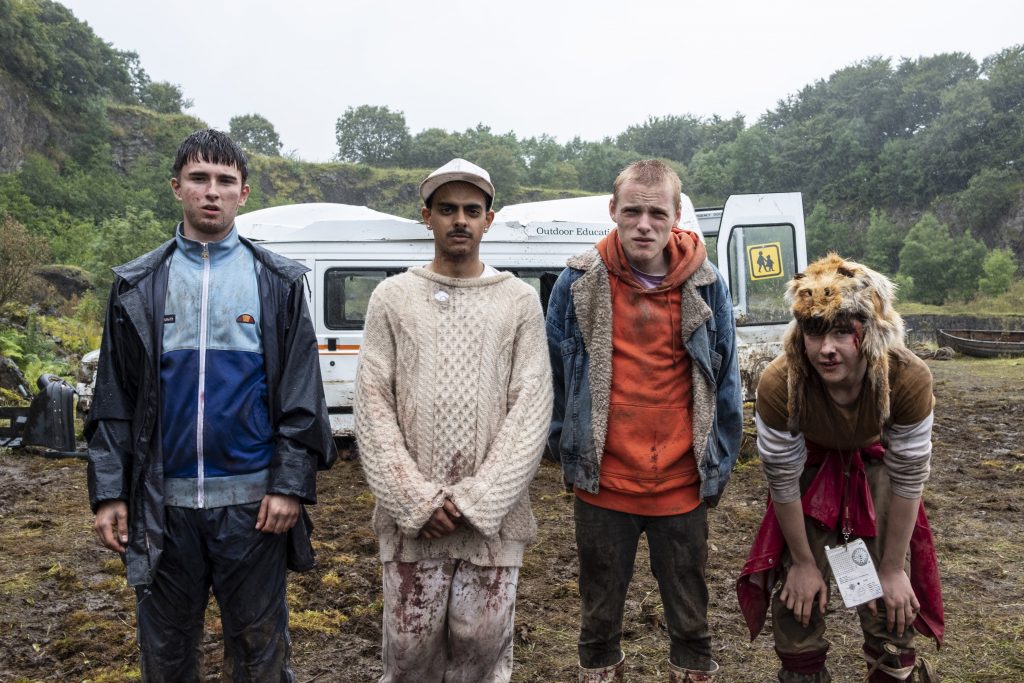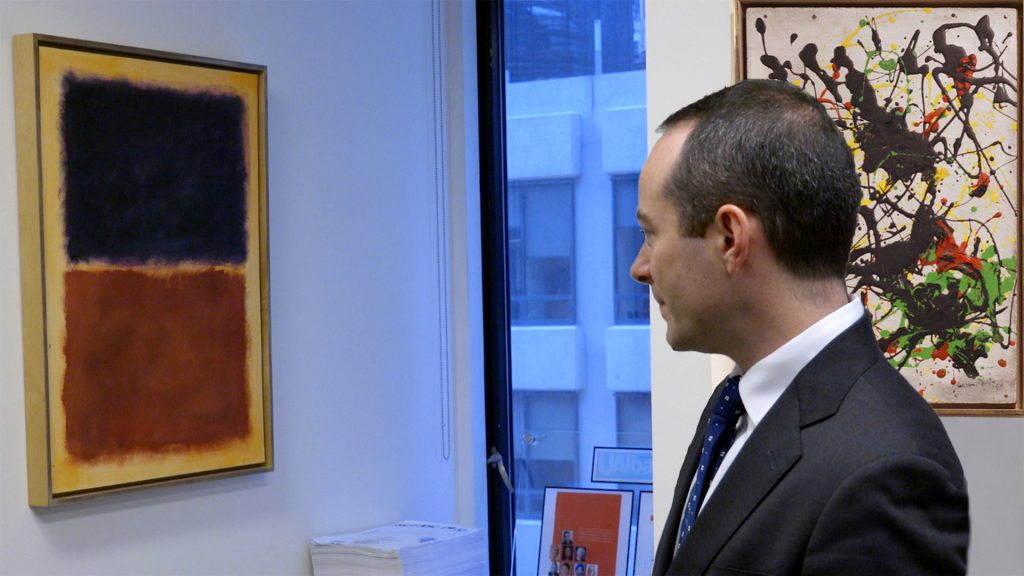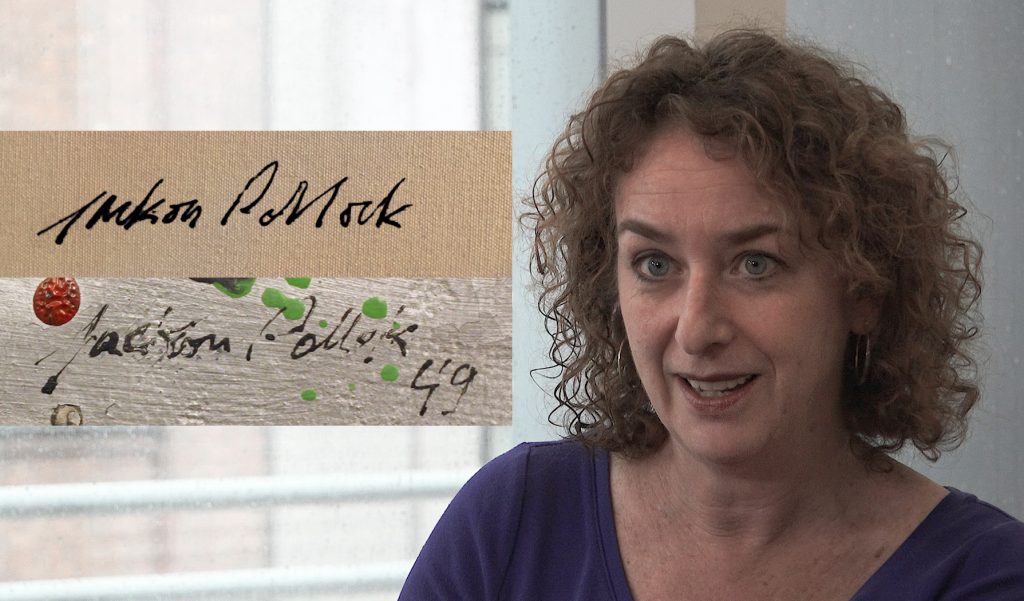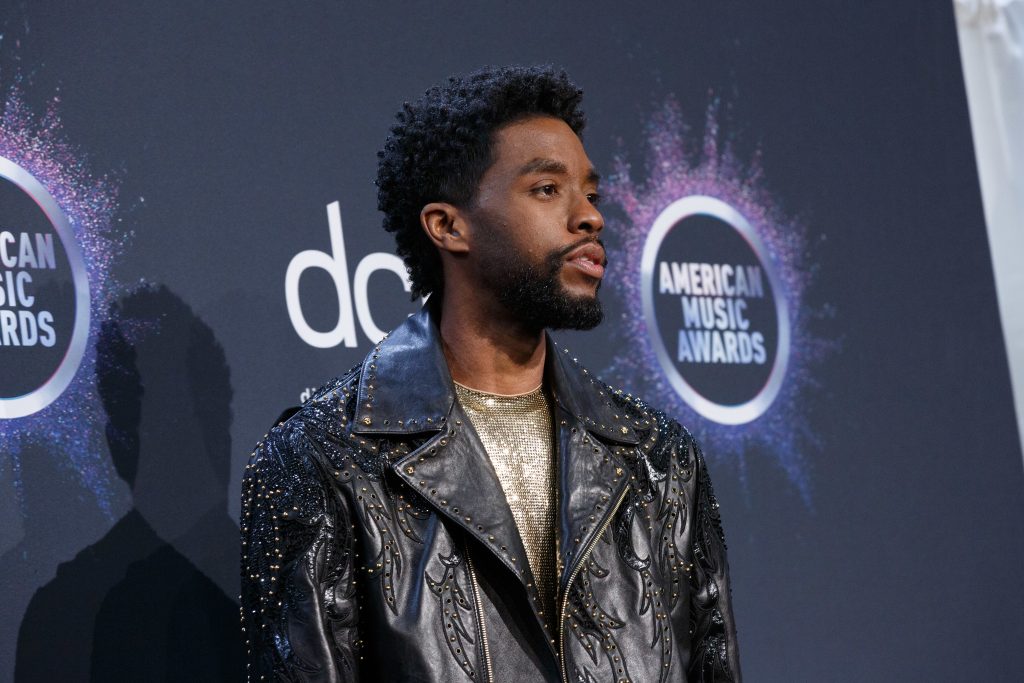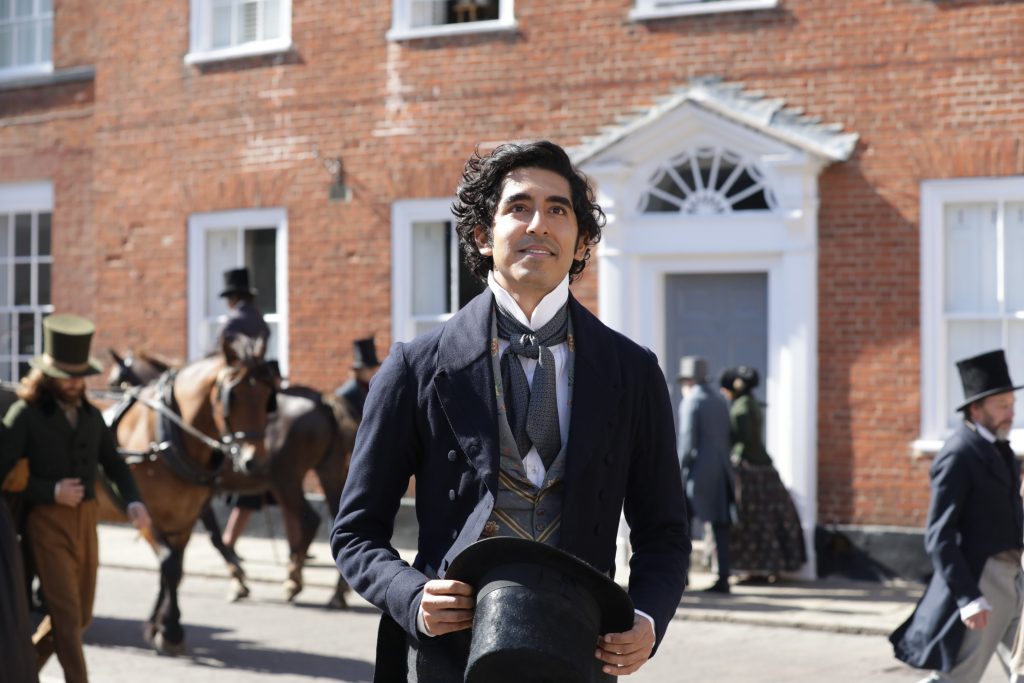September 3, 2020
by Carla Hay

Directed by Niki Caro
Culture Representation: Taking place in ancient China, the fantasy film remake “Mulan” features an all-Asian cast representing the middle-class, the military and royalty.
Culture Clash: A young woman with superhuman athletic powers disguises herself as a man, in order to fight in China’s Imperial Army, and she experiences sexism as a woman and dangerous conflicts while in combat.
Culture Audience: “Mulan” will primarily appeal people looking for family-friendly movies with a message of female empowerment, but fans of the original “Mulan” might be disappointed by the remake’s lack of humor.
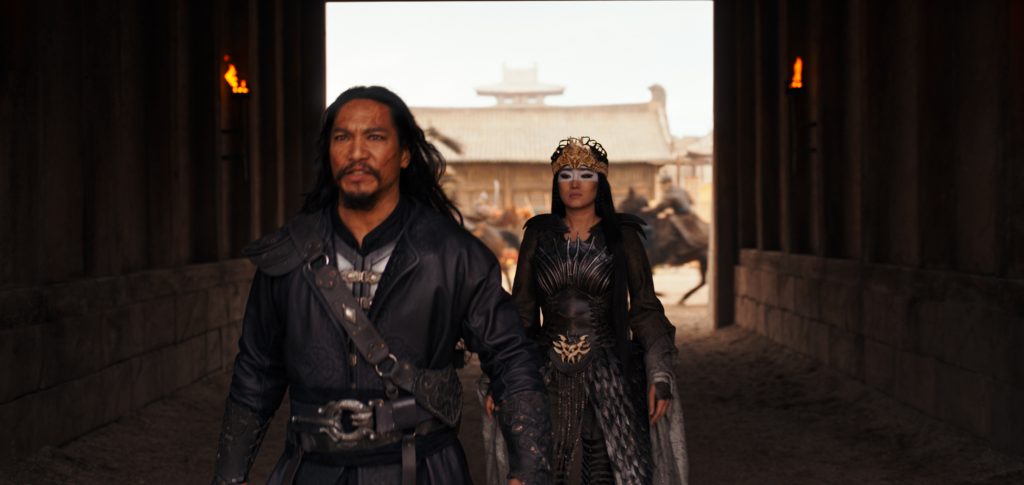
Disney’s re-imagining of its numerous classic animated films has continued with the 2020 live-action version of “Mulan,” which is a very different take on the original 1998 animated “Mulan.” The 2020 version of “Mulan” should be commended for not doing an exact story replica of the original movie, which was the biggest criticism of Disney’s 2019 remake of “The Lion King” that basically did a more technologically updated animated copy of the 1994 classic “Lion King.” Does the remake of “Mulan” have anything groundbreaking? No, but that’s okay if you want to see an escapist film with a positive message about self-confidence and not letting bigotry get in the way of being who are and pursuing your dreams.
The 2020 version “Mulan” (directed by Niki Caro) took some creative risks by retooling the story into a serious action film instead of being a musical with comedic elements, which was the format of the original “Mulan.” But by changing the film’s tone, this “Mulan” remake ends up being a lot more generic than the original version, because the original “Mulan” depicted the characters as having much more distinct personalities. Although the “Mulan” remake is not a depressing movie, there’s very little humor to be found in the story. Much of the charm of the original “Mulan” came from the humorous characters (especially the miniature dragon Mushu, voiced by Eddie Murphy) and how they interacted with Mulan (voiced by Ming-Na Wen in the original film) in her journey to becoming a warrior.
There are no musical numbers, wisecracking sidekicks or talking animals in the 2020 version of “Mulan.” However, the basic story is essentially the same: A young woman named Mulan in ancient China seems fated to follow a traditional life of being a wife and mother. But something happens that changes the course of her destiny: China is attacked by invaders and goes to war, so Mulan disguises herself as a man and enlists in the army so that her father (who has health problems) won’t have to fight in the war. (In the original “Mulan,” the Huns were the war villains; in the remake, the Rourans are the northern invaders.)
In the remake of “Mulan,” this heroine and her family have known about her “superpowers” or “chi” since she was a child, whereas in the original “Mulan,” it took a while for a fumbling and awkward Mulan to become skilled in combat fighting. Because this metamorphosis is removed from the remake, Mulan (played by Yifei Liu) essentially starts off as a superhero, who has to hide her “chi” powers in order to not be vilified as a witch. (In the original “Mulan,” the family surname was Fa, while the family surname is Hua in the remake.)
In the “Mulan” remake, Mulan has a younger sister named Xiu, who’s about four or five years younger than Mulan. Xiu’s only purpose in the movie is to show that Mulan now has a younger female who looks up to her from an early age, whereas in the original movie, Mulan was an only child. (In the “Mulan” remake, Crystal Rao plays the young Mulan, Elena Askin plays the young Xiu, and Xana Tang plays the adult Xiu.) A scene near the beginning of the film shows Mulan, at around the age of 11 or 12, dazzling Xiu with her graceful nimbleness and athletic abilities.
It’s also established early on in the movie that Mulan inherited her chi from her stern but loving father Zhou (played by Tzi Ma), a military veteran who wears a leg brace from an injury he got during a war. (In the original movie, Zhou’s health problems were from natural causes of old age.) Just like in the original movie, the “Mulan” remake has Mulan’s mother Wuwei (played by Rosalind Chao) as essentially a passive supporting character, because Mulan’s father is the parent who has more influence on Mulan.
The patriarchal sexism that Mulan battles against is still the main underlying conflict of the story, while the war is the obvious external conflict. In the movie, Zhou tells Mulan when she’s a child: “Your chi is strong. But chi is for warriors, not daughters … Soon, you’ll be a young woman, and it’s time to hide your gift away, to silence its voice. I say this to protect you. That is my job. Your job is to bring honor to the family. Can you do that?”
In this Chinese society, girls and women are told that they bring honor to the family by finding the right husbands to marry. In the original “Mulan,” there was a feisty and humorous grandmother who was desperate to see Mulan get married. As is the Chinese tradition, Mulan had to see a matchmaker to assess her qualities as a future wife and to discuss possible suitors who would be a good match for her.
There’s no grandmother in the “Mulan” remake. Instead, there’s an uptight, judgmental and humorless matchmaker (played by Pei Pei Chang) who tells Mulan that a good wife must be “quiet, composed, graceful, elegant, poised, polite, silent and invisible.” At first, the matchmaker gives Mulan her approval, by saying that Mulan has all of these qualities. But then, a wayward spider ends up on the table during the meeting, thereby causing a mishap that leads to Mulan’s extraordinary athletic ability becoming exposed.
The matchmaker is horrified that Mulan isn’t a demure and weak young woman, and so she humiliates Mulan by declaring to the family in full view of people in the town square that Mulan has brought dishonor to her family. Soon after this debacle, representatives from China’s Imperial Army come to the area to declare that each family must volunteer an adult male to serve in the war.
Zhou volunteers, since he is the only adult male in the family, but Mulan is worried that because of his leg disability, he won’t be able to survive the war. When she expresses her concerns to her father, Zhoe shows his patriarchal ego when he lectures Mulan: “It is my job to bring honor to this family. You are the daughter. Learn your place!”
The original “Mulan” had a somewhat iconic scene of Mulan cutting off a lot of her hair in order to disguise herself as a man. There’s no such hair-cutting scene in the “Mulan” remake, which is the movie’s subtle but feminist way of saying that this version of Mulan isn’t going to cut her hair for anyone. Instead, the movie abruptly shows Mulan with her hair in a bun, and she’s already disguised in her armor and taking her father’s lucky sword before she leaves home without her family’s knowledge or consent. The family figures out what happens when they find out that Mulan and the sword have disappeared.
Since the remake doesn’t have any scenes of Mulan fumbling her way through learning combat skills as a new soldier, her discomfort mainly comes from trying to hide her superpowers and her real gender, as well adjusting to being in an all-male environment for the first time in her life. In the original “Mulan,” Mulan used the name Ping as her male alias, whereas her male alias in the “Mulan” remake is Jin.
Mulan/Jin is immediately picked on by a soldier named Honghui (played by Yoson An), who wants to be the alpha male of the new recruits. Honghui’s bullying tactics are a way to test people on their physical and emotional strength. And because he’s singled out Mulan in their first encounter, it’s the obvious cue that he’s going to be Mulan’s love interest when he founds out her real gender. (It’s not a spoiler that Mulan’s true identity is eventually revealed, since it’s in the movie’s trailer and it’s a well-known part of the movie’s plot.) However, people looking for a romantic love story won’t find it in this movie.
Mulan/Jin and Honghui eventually become part of a tight-knit clique of other soldiers that includes macho Yao (played by Chen Tang); romantic Ling (played by Jimmy Wong); mild-mannered Po (played by Doua Moua); and goofy Cricket (played Jun Yu), who’s sometimes the butt of the group’s jokes. Other members of the Imperial Army are Commander Tung (played by Donnie Yen) and Sergeant Qiang (played by Ron Yuan). Commander Tung tells the soldiers that stealing, desertion and consorting with women are punishable by death, while dishonesty is punishable by expulsion.
The “Mulan” remake has definitely more of a female focus than the original, not just because it does away with Mulan having a male sidekick but also how it portrays the movie’s villains. The head of the Rouran invaders is Böri Khan (played by Jason Scott Lee), who gets a lot less screen time than his (literal) wing woman Xianniang (played by Gong Li), a powerful “witch” who can shapeshift into a hawk.
The purpose of Xianniang (a character that wasn’t in the original “Mulan” movie) is to show a parallel between her experiences of being an outcast in China because she’s a powerful woman and the similar experiences that Mulan could go through if it’s revealed that she’s a woman with superpowers. One of the movie’s most memorable scenes is when Xianniang and Mulan cross paths as enemies, but Mulan finds out that they have more in common with each other than Mulan would like to admit.
Mulan thinks Xianniang is foolish for aligning herself with a “coward” like Böri Khan. But Mulan is also in service of men who are in charge, so is Mulan’s situation all that different? The decisions made by the men in charge of the Imperial Army, including the Emperor (played by Jet Li), ultimately decide whether or not Mulan will be accepted for who she is or if she’ll be vilified and cast out from society. The outcome is extremely predictable, but this is a fantasy film that’s not trying to pretend to be historically accurate.
The screenplay for the 2020 remake of “Mulan” was written by Rick Jaffa, Amanda Silver, Lauren Hynek and Elizabeth Martin, and was inspired by the narrative poem “The Ballad of Mulan.” Some people might say that the “Mulan” remake is more “feminist” than the original “Mulan,” because Mulan is aware of her superpowers from an earlier age, she doesn’t have a “Prince Charming” type of romance, and because the movie has the addition of the powerful female character Xianniang. The filmmakers of the “Mulan” remake seem to understand that feminism isn’t about male-bashing but about people of any gender not being discriminated against because of their gender.
The real world doesn’t always work in a fair and unbiased way, but the message of the movie that’s very realistic is that people can’t overcome gender discrimination obstacles by themselves. In order for real change to be made, enough people (include the right people in power) must make those changes. And if a woman can fight in an army of men, there’s no reason for her to not be able to rescue them too.
Visually, the “Mulan” remake is not a masterpiece, but it gets the job done well in all the right places. The main way that the movie lags is how the personalities of the characters are watered-down from the original “Mulan” movie. All of the actors in the movie do the best with what they’ve been given, but there doesn’t seem to be much depth to any of the predictable characters of the film, except for tormented soul Xianniang.
It’s implied that Xianniang pledged allegiance to Böri Khan because he was the only person who offered her a sense of belonging and family after she became an outcast. He uses her insecurities about being alone in the world to continue to manipulate her emotionally and maintain her loyalty. The “Mulan” remake obviously wanted a more serious tone than the original “Mulan,” so the movie could have benefited from a deeper exploration of this complicated alliance between Böri Khan and Xianniang.
The “Mulan” remake delivers exactly what you would expect from this type of Disney film. The inspirational story, engaging visuals and well-choreographed action sequences are good enough to make this a crowd-pleasing movie for the intended audience. However, many scenes in the remake of “Mulan” look derivative of better-made war movies that have been filmed in a much more majestic way. And if you’re looking for a movie worthy of several Oscar nominations, then this “Mulan” remake is not that movie.
Disney+ will premiere “Mulan” on September 4, 2020. From September 4 to December 3, 2020, the movie has an additional, one-time fee that allows Disney+ subscribers in the U.S. to see the movie on demand for an unlimited time during the Disney+ subscription. As of December 4, 2020, Disney+ subscribers in the U.S. do not have to pay this additional fee to see the movie. Information on additional fees for “Mulan” might vary in countries where Disney+ is available.

